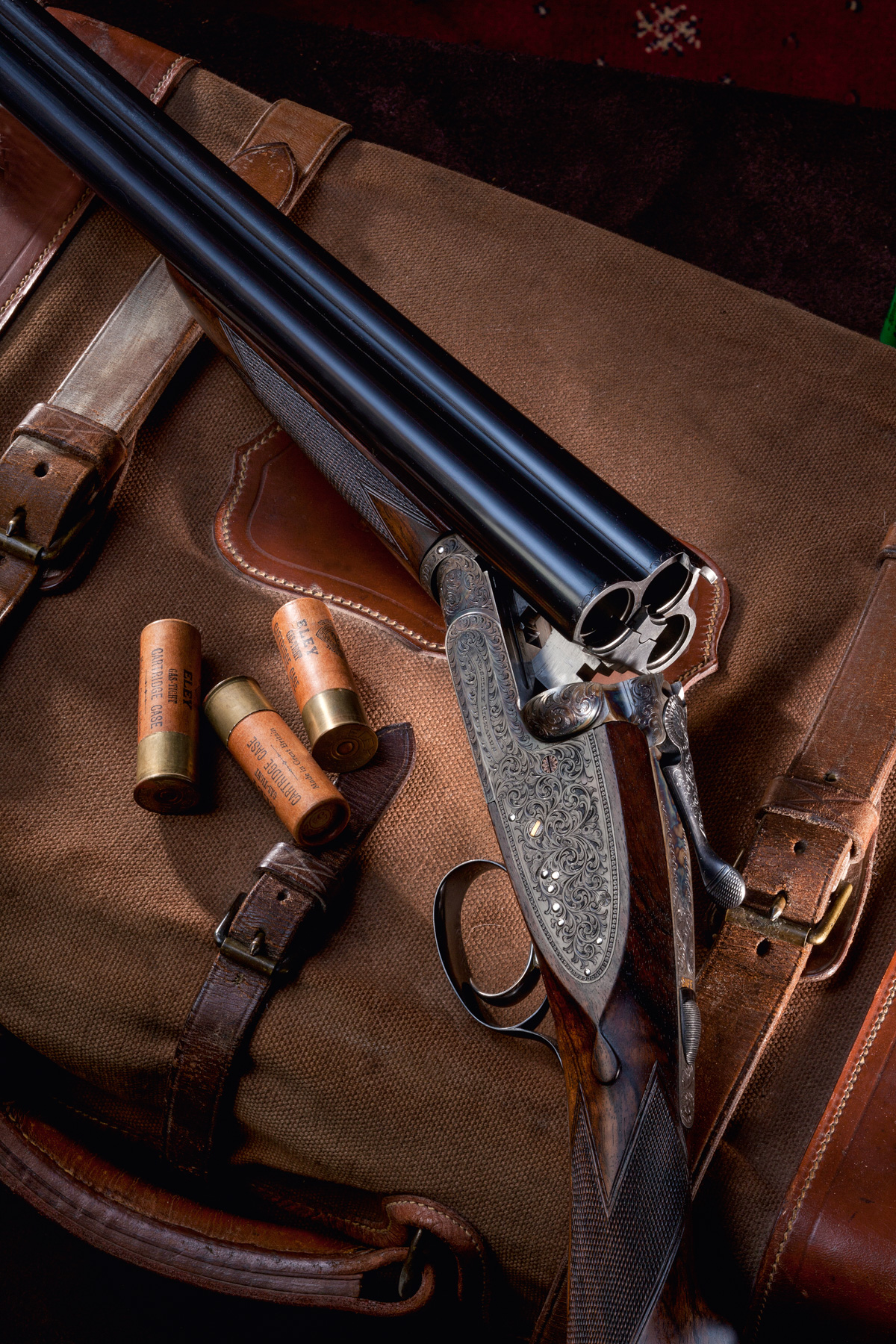Volume II of The Encyclopædia of Sports and Games edited by The Earl of Suffolk and Berkshire which appeared in 1911 acknowledged exactly this; “… greater success has attended the Edwinson-Green three-barrel hammerless weapon for grouse, partridge, pheasant, and rabbit drives. The objections concerning complications of mechanism incidental to the introduction of the third barrel have been ingeniously overcome, and there is no doubt but that among a certain class of sportsman the three-barrel weapon will have a successful vogue.”
Green, who occupied retail outlets in Cheltenham and Gloucester plus a workshop in the heart of Birmingham’s gun quarter, built eighteen three barrel guns. His patent specifications of July 1902 outline an ingenious mechanism combining a single trigger with a three barrel configuration in which the right and left tumblers are cocked in the usual way by cocking rods while the central hammer is cocked by a pin protruding from the right hand hammer.
The Boss and Dickson designs are better known only because Green sold his triple barrels within the gun trade where the retailer took most of the credit. Some went to Charles Lancaster in London others to Lyon & Lyon in Calcutta but two were made up and sold as barreled actions to Westley Richards. The first, a 12 bore, left the Green factory in late February 1911 then early the next month a 16 bore was delivered. Both were given serial numbers in the Westley range 17340 and 17272 respectively and the Green records tell us Westley Richards paid 35 guineas for each.
The 16 bore, a sidelock ejector, was beautifully stocked and engraved and sent off to an international exhibition in Turin where it won a gold medal. Frederick Courtney Selous, who had recently squired Teddy Roosevelt around British East Africa wrote to Westley Richards saying, “Yours was far and away the best exhibit of Sporting Guns and Rifles (British and Foreign) in the whole exhibition.”
Both Green and Westley’s promoted the relative success of three barrel guns in their advertising literature. Green’s Gloucester trade label mentions only that they were makers of “three barrel guns with one trigger” while Westley’s catalogue offered the “new treble barreled game guns” at 80 guineas while echoing the sentiments expressed in The Encyclopædia of Sports and Game, “This weapon represents the highest development of this system, and now that reliability can be guaranteed it is confidently hoped that sportsman will appreciate its great advantages over the two-barreled gun for certain conditions of sport.”



















Tim Wilkes on April 12, 2016 at 2:38 am
I hadn't appreciated the three barrel guns were backlocks. Must have been very busy in there behind the action face!
Thanks Doug
Simon Clode on April 12, 2016 at 3:43 am
This is actually a sidelock in the picture.
Simon
Matthew Schmidt on April 12, 2016 at 3:13 am
Great article and a very nice gun. Interestingly in Germany and Austria where three barrelled guns (called Drillings in German) are very common, the shotgun drilling (Flintendrilling) is also reasonably rare. The British three barrelled guns generally have their third barrel either on top and of the other two, or three side by side by side. The continental makers in most cases have the third barrel underneath and the majority are extractor only. The gun in the picture seems to have three ejectors or is it two ejectors and one extractor.
Matt Schmidt.
Vance Daigle on April 12, 2016 at 7:56 am
Very nice story Mr.Tate, thank you for sharing this with us.
Best day to you Sir...I look forward to reading more of your writing.
In Christ
Vance,